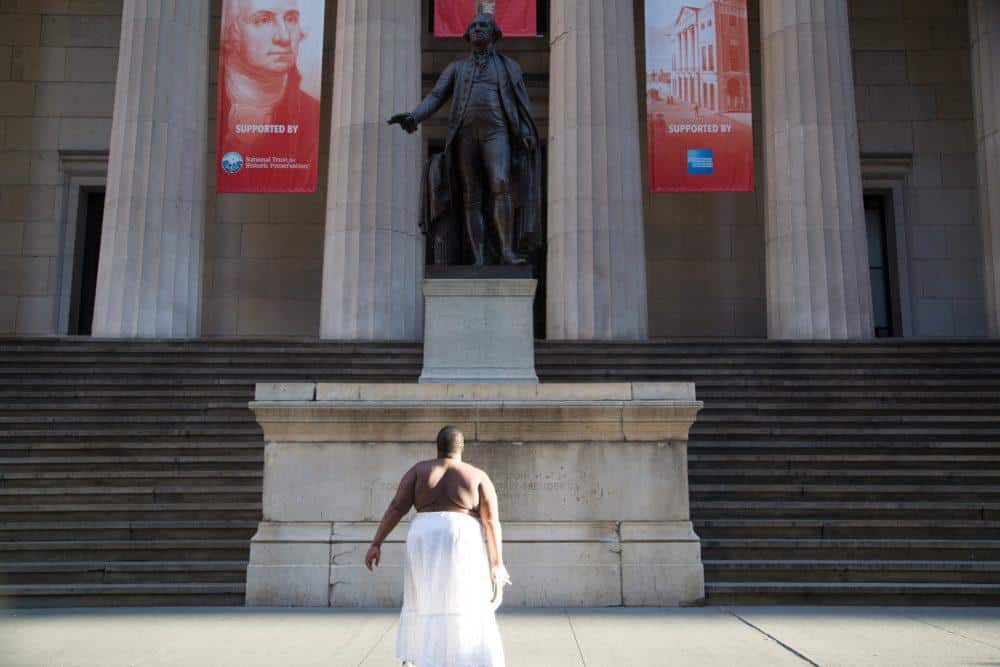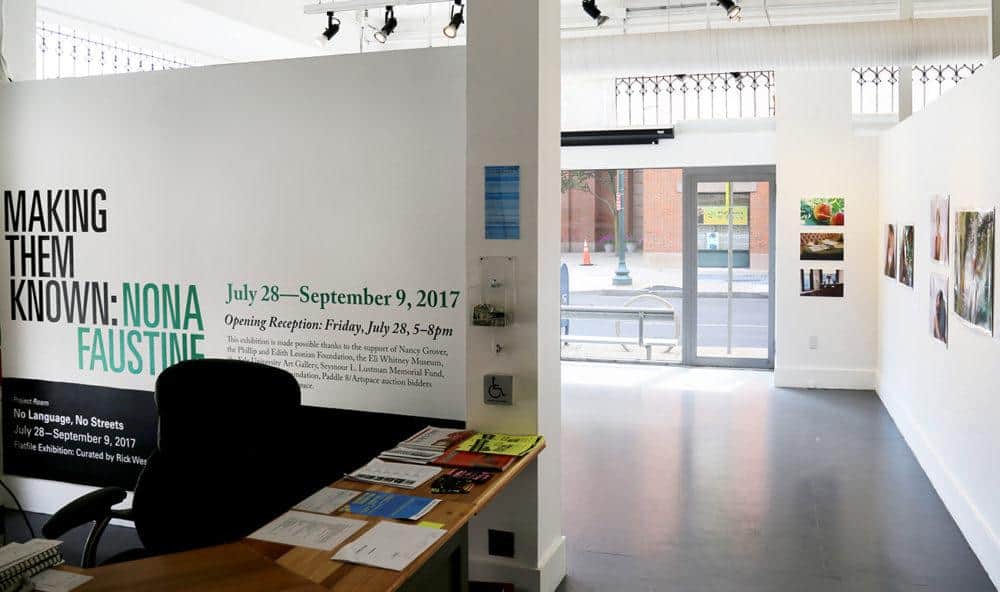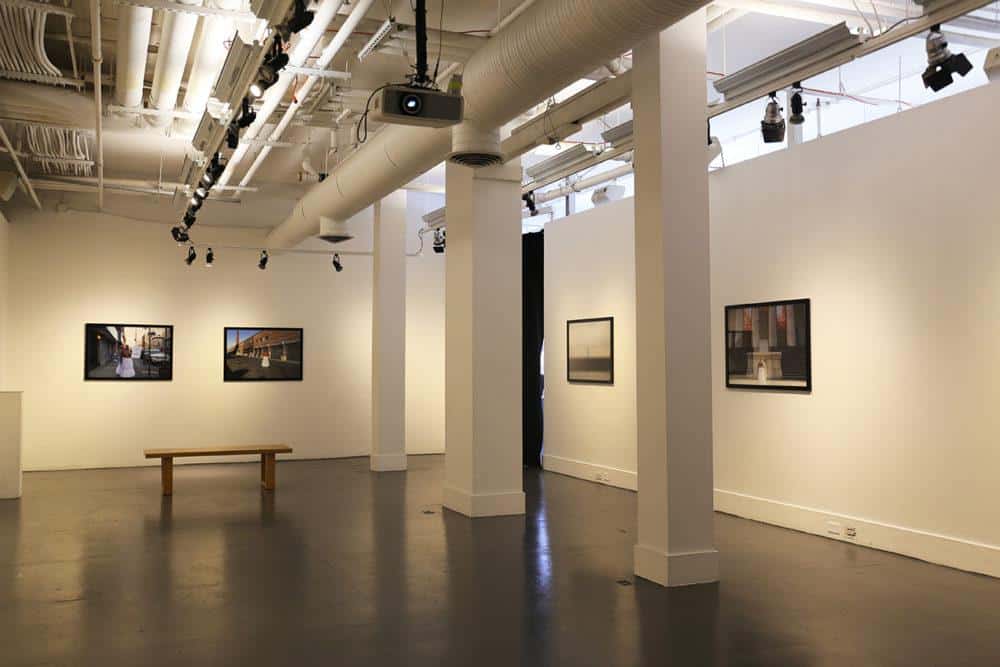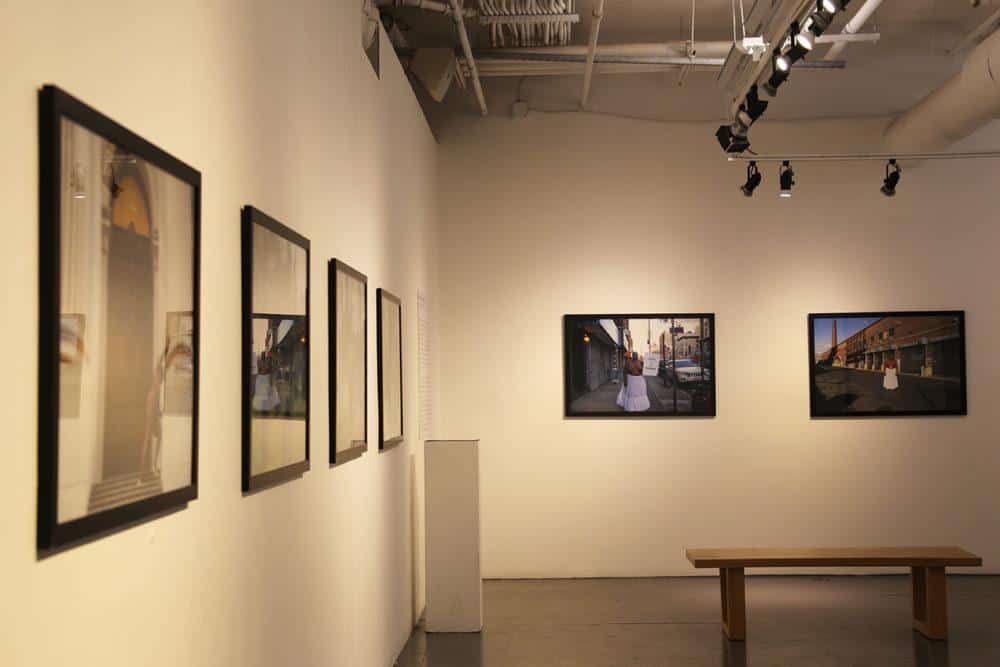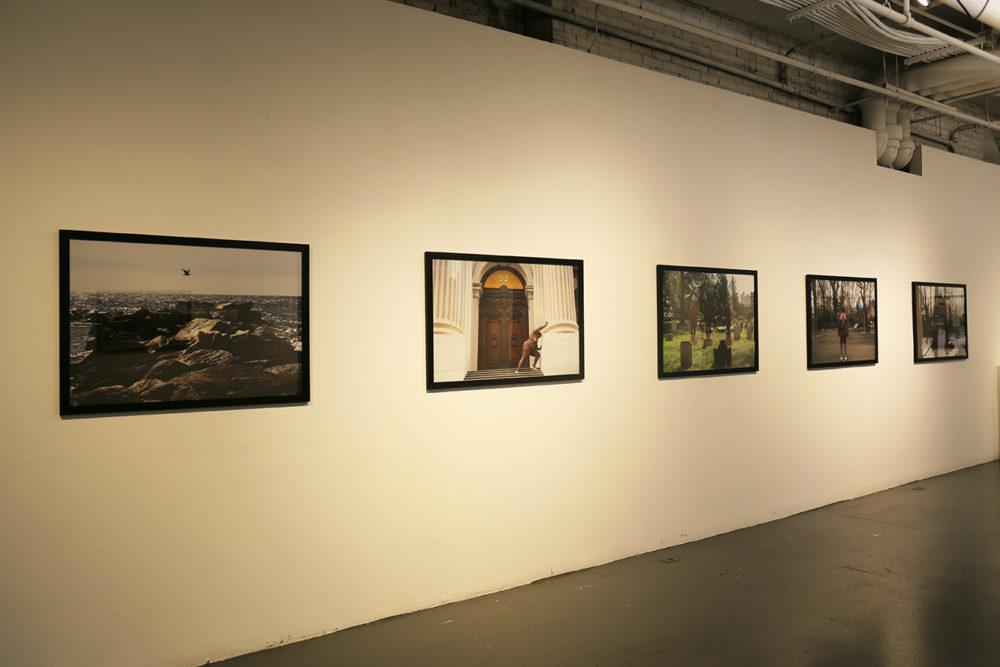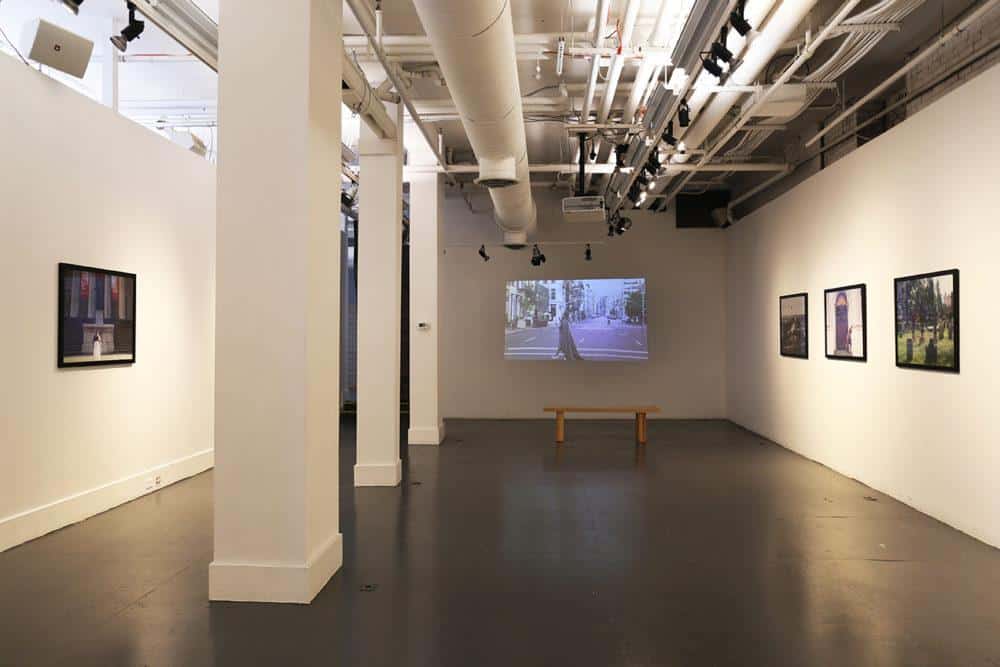
Making Them Known: Nona Faustine
Curator: La Tanya Autry
July 28—September 9, 2017
Nona Faustine, ‘. . a thirst for compleat freedom … had been her only motive for absconding.’ Oney Judge, Federal Hall NYC, 2016. Photograph.
Photographer Nona Faustine confronts history in a quiet, yet forceful, way. In her series White Shoes, donning white pumps, sometimes with a white skirt or nude, Faustine employs her body as an embodiment for millions of enslaved women of African descent. At times she represents known figures, as in her photograph Ar’n’t I a Woman, 2017. But usually she embodies the countless other unrecognized African women who were violated by chattel slavery and erased from history. The Brooklyn native spotlights the central role of black womanhood in the foundation of American society by occupying the center of most of her compositions and narrating her works through descriptive titles. As she exposes unmarked pasts of enslaved African peoples in early New York, she displays her own body unabashedly – vulnerable, yet powerful – in the city’s financial core. She reveals the pivotal role of black bodies vis à vis slavery in the rise of American capitalism.
Faustine’s attention to the legacy of the visual archive of the colonized and enslaved shapes her conceptual blend of self-portraiture. Her work redresses the dehumanizing nineteenth-century slave daguerreotypes commissioned by scientist Louis Agassiz and that era’s fascination with prurient illustrations of the physique of the so-called ‘Hottentot Venus’ or rather Sarah Baartman. In kinship to the enslaved women forced to strip down to the waist for Agassiz’s racial theory project or Baartman, the native South African Khoikhoi woman who was presented in freak shows throughout Europe, Faustine bares herself before her own lens. She also shares her barred view of American symbols in her series My Country to demonstrate our persistent freedom struggles. Once again, the artist stresses the relationship between visibility, knowledge, and attainment. Through enlivening traces of the forgotten, she restores dignity to marginalized subjects and ensures that they are remembered as people. As Faustine makes them known, she compels us to examine our concept of humanity. She makes us know ourselves.
Nona Faustine (MFA ’13, ICP-Bard) is a Brooklyn-based photographer and visual artist whose work focuses on the points at which history and identity intersect. For her two most recent series, White Shoes and My Country, Faustine often places herself in the center of the image. In White Shoes, she photographed her nude body in marked and unmarked historic sites of slavery around Lower Manhattan and Brooklyn, including a Dutch pre-revolutionary cemetery in Brooklyn where three enslaved people are buried among settlers; the Tweed Courthouse in Lower Manhattan, built on top of the African Burial Ground; and Federal Hall on Wall Street, a historic site of slave auctions. Her ongoing series, My Country, introduces a disruptive grey line that bisects iconic U.S. monuments around New York and Washington, D.C., including the Washington Monument, the Lincoln Memorial, and the Statue of Liberty. The line questions the symbolic legacies we assign certain sites and recognizes that a commemorative site for one person may be a space of trauma for another.
Faustine’s images have received international attention and have been published in a variety of media outlets, including the New York Times, Huffington Post, Hyperallergic, Village Voice, The Guardian, Artforum, Aperture, Fader Magazine, and The Brooklyn Rail. Her work was recently exhibited in group shows at Sprueth Magers Gallery in Los Angeles that put her work in dialogue with Carrie Mae Weems, Kara Walker, Betye Saar, and other pioneering black female artists who address the body and power. Faustine has also exhibited at the Schomburg Center for Black Research in Harlem; the International Center of Photography, New York; Mana Contemporary, Jersey City; the Studio Museum of Harlem; Smack Mellon, Brooklyn; the African American Museum in Philadelphia; and Baxter St. Camera Club in New York. Faustine’s work is in the permanent collection of the Studio Museum of Harlem. She has lectured at Albany State University, Bucknell University, and Marist College among others. Her work is in the permanent collection of the Studio Museum of Harlem. Read more about Nona Faustine in this recent profile in the New York Times. Listen to this inteview with Nona Faustine on WNHH Life, Law & Culture
LaTanya Autry is the inaugural Curator of Art and Civil Rights at Mississippi Museum of Art and Tougaloo College. Most recently she was the Marcia Brady Tucker Senior Fellow in the Department of Photography at Yale University Art Gallery.
The 2017 Summer Apprenticeship at Artspace is made possible thanks to the generous support of Nancy Grover, the Phillip and Edith Leonian Foundation, the Seymour Lustman Fund, Ruby Melton & Gail McAvay, and Roz Meyer, the Eli Whitney Museum, Yale University Art Gallery, the Yawkey Community Service Fellowship and the Yale President’s Public Service Fellowship, The Public Welfare Foundation, Paddle 8/Artspace auction bidders, and other Friends of Artspace.
